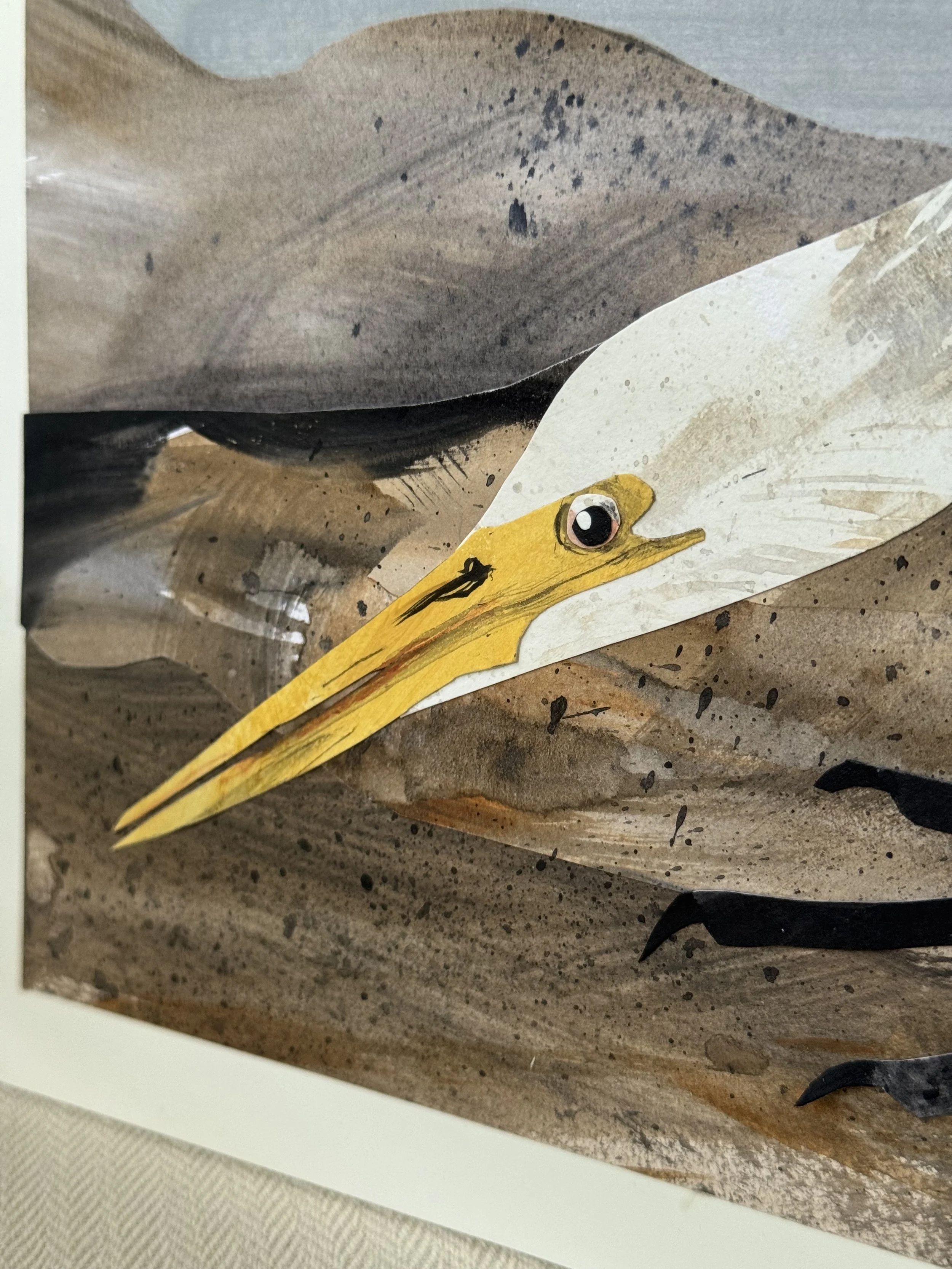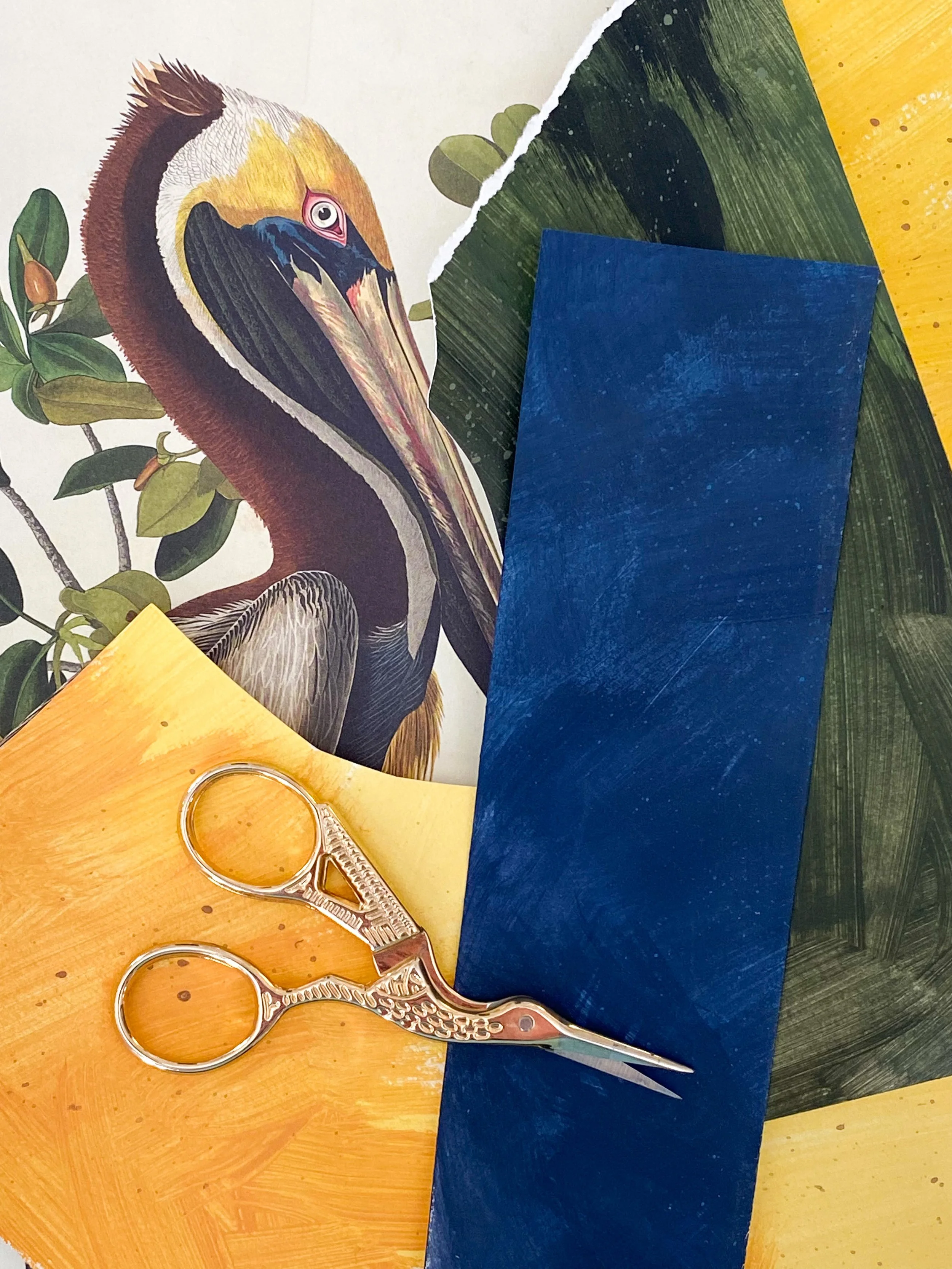Paper Taxidermy: Why I Take Birds Apart to Put Them Back Together
When people first see my work, they often ask about the process. The best way I can describe it is this: my art is a kind of paper taxidermy.
Like a taxidermist, I break down a bird into its parts—wings, feathers, eyes, and beak—before reassembling them piece by piece. But where taxidermy seeks preservation, my work seeks perspective. Through cut-paper collage, the bird is rebuilt so that every layer asks to be noticed, encouraging viewers to pause, look closer, and discover something new in what they thought they already knew.
In the end, my work isn’t just about birds, or even about paper. It’s about paying attention. About taking apart the pieces of the world around us—and finding ways to put them back together with care, reverence, and new life.
Dissection Through Observation
My process always begins with close study. I spend time with field guides, Audubon’s original Birds of America, and my own observations of living birds. I break the bird down into its essential components —an act of dissection on paper. By pulling apart what makes a bird look like itself—the curve of a spoonbill’s beak, the fierce eye of a great blue heron—I begin to understand its character. Once the bird is broken down, I begin reconstruction. Layer by layer, shape by shape, I reassemble the bird until flat paper gains dimension. Where Audubon used watercolor and engraving, I use paint and scissors. What begins as fragments slowly takes shape.
“Cut-paper collage lets me merge the roles of artist and naturalist—dissecting with precision, then rebuilding into a new artistic form.”
A Modern Naturalist’s Craft
Like Audubon, I pursue detail and reverence for the living world. But where his approach was catalog and conquest, mine is reimagining and renewal. Cut-paper collage lets me merge the roles of artist and naturalist—dissecting with precision, then rebuilding with care. It’s my way of honoring birds not as static specimens, but as vibrant presences in our shared landscapes.
Using hand painted papers and scissors to create cut-paper collages inspired by 19th century naturalists.
An Invitation to Slow Down
We live in a world of scrolling and skimming, where images flicker past without pause. My collages resist that pace. They ask you to slow down. To trace the curve of a feather. To notice the spaces where paper edges overlap. To see how something flat becomes dimensional, and how something fragmented becomes whole again. In the end, my work isn’t just about birds, or even about paper. It’s about paying attention. About taking apart the pieces of the world around us—and finding ways to put them back together with care, reverence, and new life. To me, paper taxidermy is more than a metaphor. It’s the heart of my practice: taking something apart to understand it, then putting it back together to be seen differently. In each collage, I hope you’ll see more than a bird on a panel. I hope you’ll see a call to slow down, look closer, and notice the life that surrounds us.



